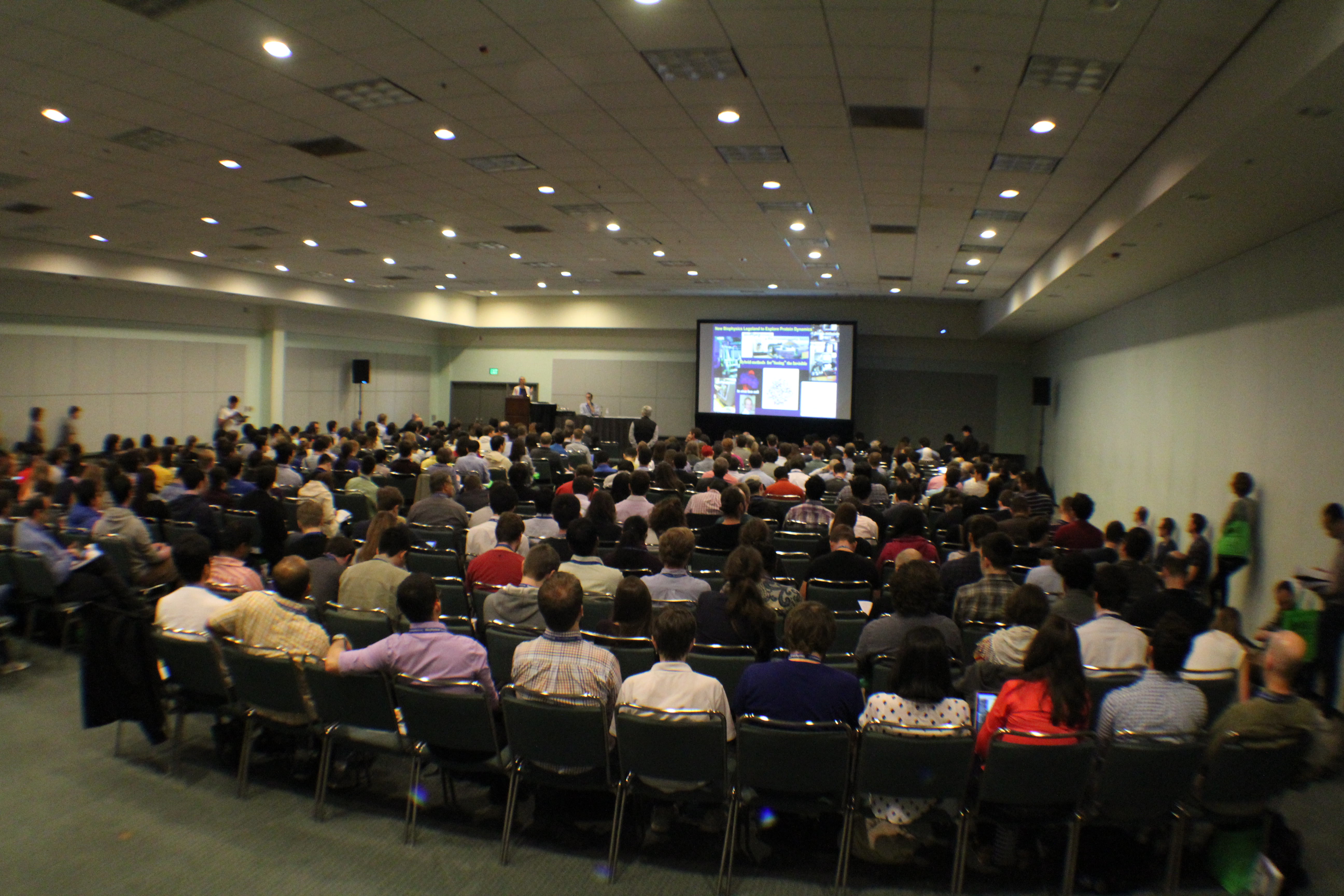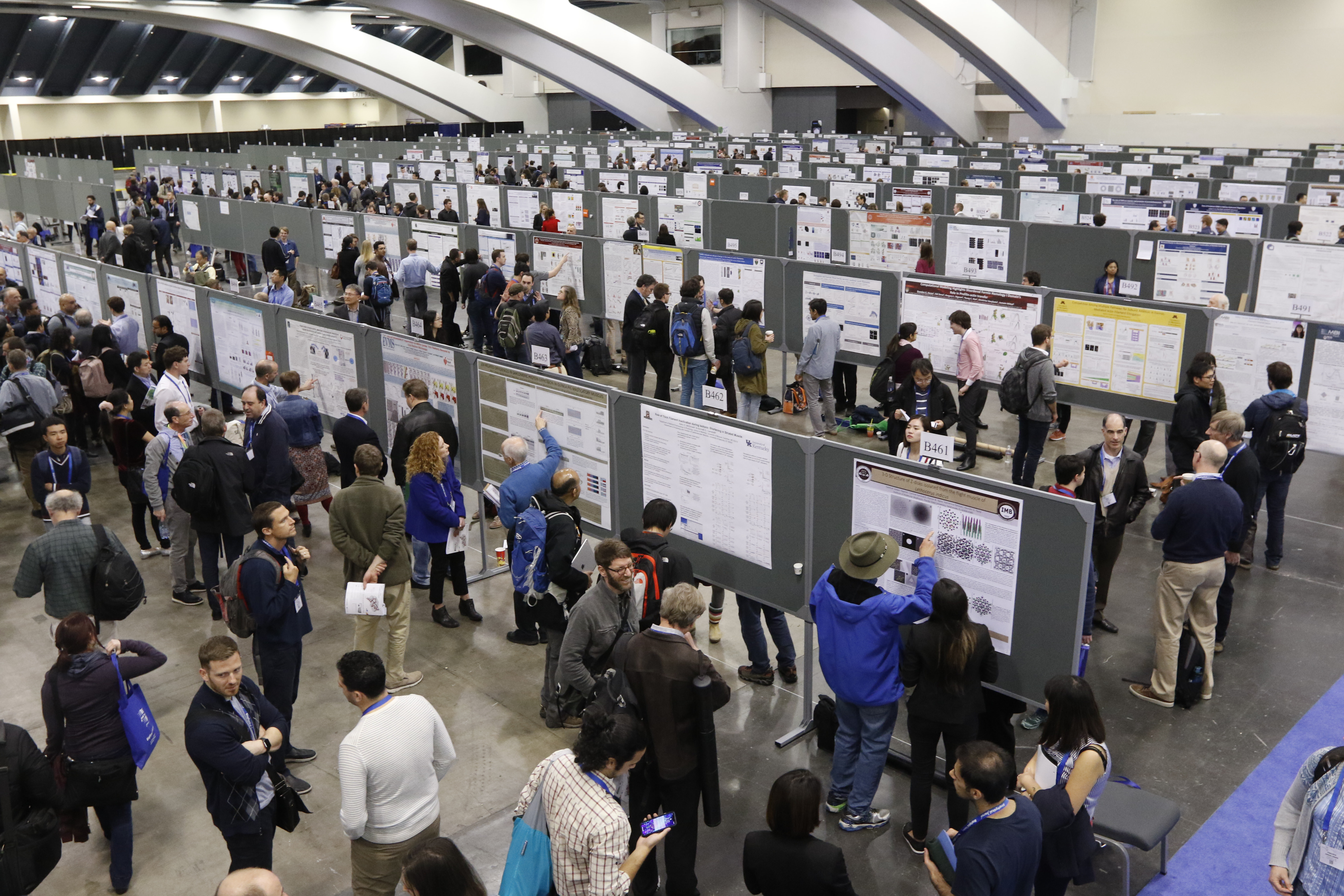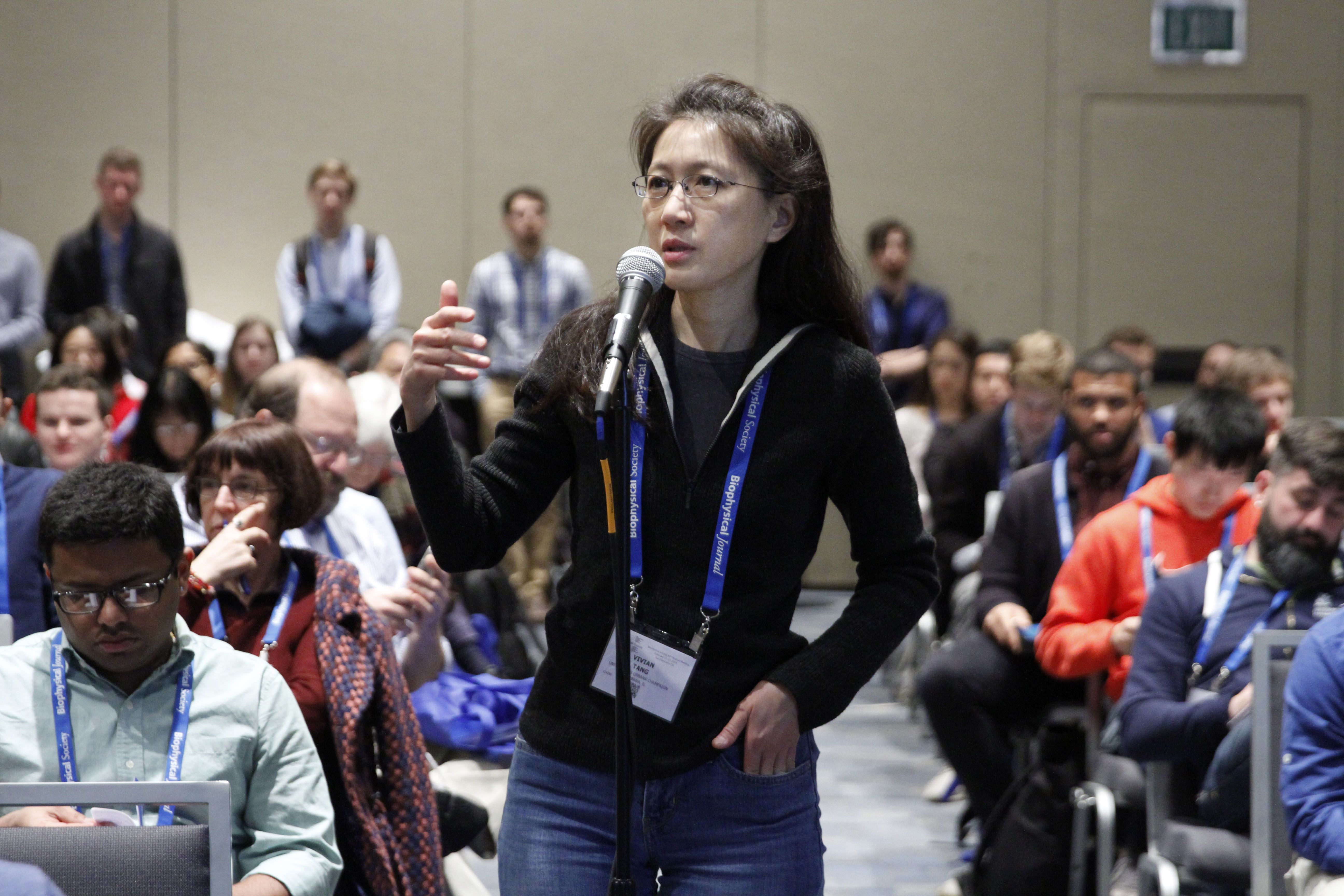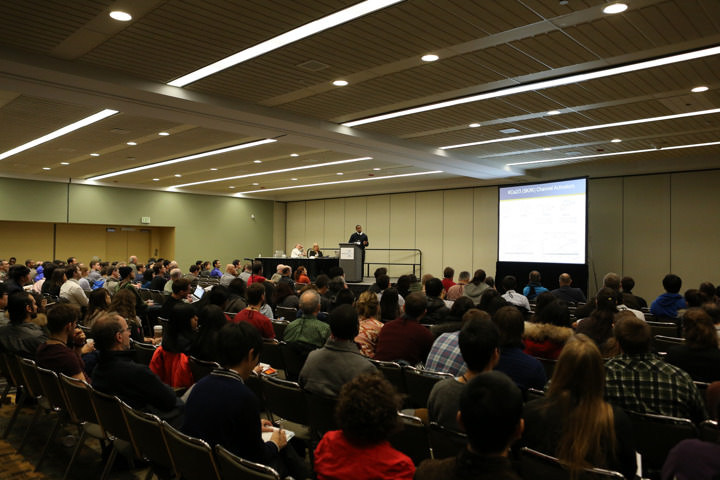Biophysical Society member and former Annual Meeting program co-chair, Karen Fleming, Johns Hopkins University, explains how the Annual Meeting scientific program is developed.
Registration and abstract submission for the 64th Annual Meeting of the Biophysical Society opens July 1. You might be wondering how the program typically comes together. What do the organizers do? Who helps them? How are the symposia topics chosen? Stated another way, what happens in the room where it happens? This blog post will hopefully demystify the meeting genesis by describing the process for how the scientific program develops.
Organizing the meeting is nearly a two-year long process carried out by a group of scientists collectively known as the Program Committee. The Annual Meeting chair (or chairs) leads the committee and is appointed by the Society president-elect soon after s/he is elected. Other members of the committee include three members of Council, who each serve rotating three-year terms, , the past meeting chair(s), and finally members at large who are appointed by the chair(s) to serve a one-year term. The committee composition is designed to cover a broad range of scientific areas, and the appointment strategies serve to stimulate a regular turnover of its membership to ensure diverse representation yet at the same time retain some institutional memory about recent meeting challenges and successes.
The official charge to the Biophysical Society Program Committee is to develop a scientific program that responds to and serves the needs of the membership, which represents diverse scientific and technical, educational, and demographic constituencies. The committee accomplishes this through the symposia, workshops, and platform talks.

Symposia
Each year there are 20 scientific symposia with invited speakers. Most of the symposia topics (e.g., proteins, nucleic acids, ion channels, etc.) are distributed according to an analysis of the frequencies of topic categories selected in abstract submissions from the previous years. This ground-up strategy capitalizes on the interests of the scientists who attend the meeting. In addition, there are two to three symposia reserved for “emerging areas.” These areas can come from Council, can be identified by an increase in abstract submissions over time, can change from year to year or can be part of a multi-year strategic plan to incorporate emerging fields or methods.
Member-Suggested Symposia
The Society has a call each fall for member-suggested symposia topics. These are discussed by the entire Program Committee, and all Society members are welcome to submit their ideas every year. A fully developed submission will contain a list of 4-6 speakers as well as a thoughtful paragraph that explains why the symposium you are suggesting is timely and compelling. These symposia ideas have been used literally as submitted or alternatively as a jumping off point on which to build a set of talks for a symposium or workshop. The final symposium composition often depends on the other factors the meeting is trying to balance, discussed below.
Who Can Speak?
There are guidelines for who can be invited to speak. The Biophysical Society has a firm rule in place that scientists cannot speak in a symposium or workshop more frequently than every third year. The lists of past speakers are provided to the Program Committee and Council for reference. Once ineligible speakers have been eliminated, the committee first and foremost seeks speakers who will give outstanding scientific presentations in each of the topical areas. Once this list is assembled, the committee strives for inclusive excellence in the sense that the speaker demographics (gender, ethnicity, and geographic origin) should be representative of the membership.
Platform Talks
Platform talks are a very successful aspect of the Biophysical Society, and the meeting program includes 64 such sessions. There are 8 speakers in each session and two session chairs who do the introductions and keep everything on time. Anyone at any level can be considered for a platform talk if you indicate such an interest when you submit your abstract. It is important to be strategic with your abstract category selection because platform topics derive from abstract categories with a threshold number of submissions. Platform speakers and chairs are selected during the “sort,” described next.

The Abstract Sort
All of the poster abstracts submitted for the meeting must be programmed to a platform or poster session theme, time, and day. This sorting is generally conducted by the program committee, the Society officers, members of Council, and other members of the Society as needed. As with the Program Committee, this group of sorters regularly turns over yet also allows some institutional memory. Each person receives abstracts in their area of expertise based on the submission category the submitter chose. Sorters read all the abstracts in their area and are tasked with grouping them together to create synergistic poster sessions and platform talks. Sorters are also asked to program inclusive platform sessions.
Biophysical Society Lecturer
The BPS Lecturer is selected by the Society president and is the highest annual award bestowed by the Biophysical Society.
New and Notable
The Society has a call in early November for members to submit nominations for this symposium that exclusively features late-breaking and exciting science. Self-nominations are accepted. These nominations are discussed by the Program Committee, who select the speakers. Be sure to nominate your colleagues if they have cool, exciting scientific findings that are hot off the presses!

Future of Biophysics
This symposium, sponsored by the Burroughs Wellcome Fund, highlights the work of young investigators doing cutting-edge research at the interface of the physical and life sciences. The Society has a call in mid-September for nominations for this symposium. These submissions are reviewed by the Program Committee, who select the speakers.
Awards Symposium
The Awards Symposium features talks by several of the Society’s award winners, including the recipients of the Anatrace Membrane Protein Award, the Avanti Award in Lipids, the Margaret Oakley Dayhoff Award, the Michael and Kate Bàràny Award for Young Investigators, the Kazuhiko Kinosita Award in Single Molecule Biophysics, the Founders Award, the Ignacio Tinoco Award, the BPS Innovation Award, the BPS Award in the Biophysics of Health and Disease, and the Biophysical Journal Paper of the Year Award.
Workshops
Workshops occur during the Tuesday evening of the Annual Meeting. These are generally techniques oriented. Their number can vary from year to year depending on scientific developments and the interests and needs of the Society.
Subgroup Synergy
There should not be overlap between the main scientific program and that of the subgroup symposia. The subgroup chairs receive a working copy of the Annual Meeting plan a year in advance and subsequently receive the final program as soon as it is available. The program and subgroup chairs work to eliminate any cases of overlap if they mistakenly arise. Several years ago, subgroups began following the same guidelines as the regular program where subgroup speakers cannot speak more frequently than every third year in either subgroup or regular meeting symposia.

Timeline for the Scientific Program
Each year at the fall meeting of Council, which all program chairs attend, Council communicates with the program chairs about the strategic direction of the Annual Meeting Program. With this information, the Program Committee develops a tentative program, which it presents to Council at the Annual Meeting during two separate meetings of Council. The Program Chair will normally attend both of these to present the tentative program, take feedback and answer questions. The first meeting happens at the beginning of the Annual Meeting where the Program Chair will present the ideas and speaker lists for the next year’s annual meeting. There are legendary stories of lively discussions by members of Council at this “first look” meeting. The Program Chairs take all this feedback and refine the composition of their future symposia over the course of the next few days, during which time they also meet with the subgroup chairs to get additional input. The Program Chairs then present a more final version at the Council meeting that occurs on the last day of the Annual Meeting. At this time, Council will vote to approve the meeting plan, and the work begins in earnest to assemble all the speakers and make it all happen.